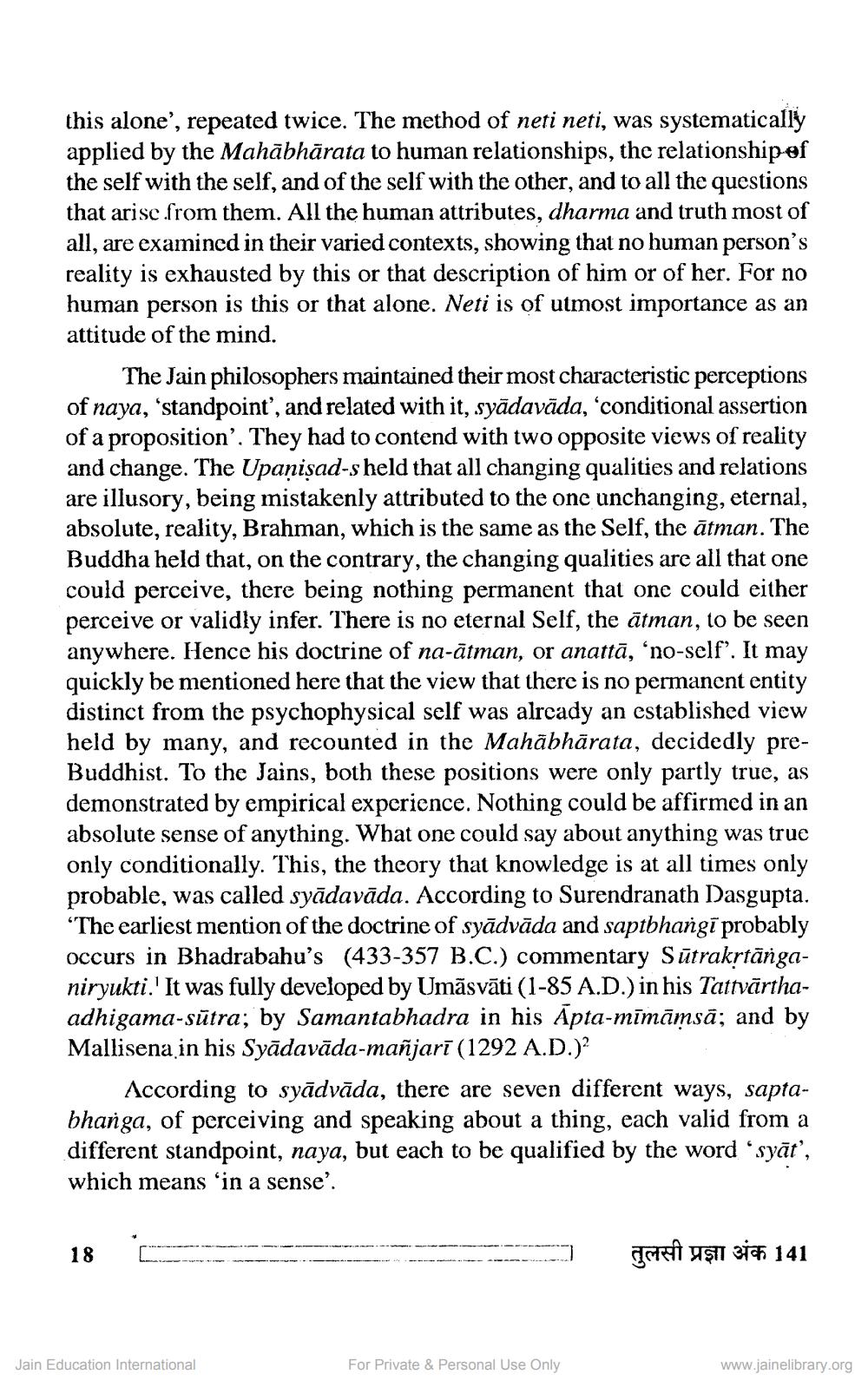________________
this alone', repeated twice. The method of neti neti, was systematically applied by the Mahābhārata to human relationships, the relationship of the self with the self, and of the self with the other, and to all the questions that arise from them. All the human attributes, dharma and truth most of all, are examined in their varied contexts, showing that no human person's reality is exhausted by this or that description of him or of her. For no human person is this or that alone. Neti is of utmost importance as an attitude of the mind.
The Jain philosophers maintained their most characteristic perceptions of naya, 'standpoint', and related with it, syādavāda, "conditional assertion of a proposition'. They had to contend with two opposite views of and change. The Upaņişad-s held that all changing qualities and relations are illusory, being mistakenly attributed to the one unchanging, eternal, absolute, reality, Brahman, which is the same as the Self, the ātman. The Buddha held that, on the contrary, the changing qualities are all that one could perceive, there being nothing permanent that one could either perceive or validly infer. There is no eternal Self, the ātman, to be seen anywhere. Hence his doctrine of na-ātman, or anattā, ‘no-self'. It may quickly be mentioned here that the view that there is no permanent entity distinct from the psychophysical self was already an established vicw held by many, and recounted in the Mahābhārata, decidedly preBuddhist. To the Jains, both these positions were only partly true, as demonstrated by empirical experience. Nothing could be affirmed in an absolute sense of anything. What one could say about anything was true only conditionally. This, the theory that knowledge is at all times only probable, was called syādavāda. According to Surendranath Dasgupta. “The earliest mention of the doctrine of syādvāda and saptbhangī probably occurs in Bhadrabahu's (433-357 B.C.) commentary Sūtrakrtānganiryukti.' It was fully developed by Umāsvāti (1-85 A.D.) in his Tattvārthaadhigama-sūtra; by Samantabhadra in his Apta-mīmāmsā; and by Mallisena in his Syādavāda-mañjarī (1292 A.D.)?
According to syādvāda, there are seven different ways, saptabhanga, of perceiving and speaking about a thing, each valid from a different standpoint, naya, but each to be qualified by the word “syāt', which means 'in a sense'.
18
-----
--------------
-----
------
-
Ai uşi 31 141
Jain Education International
For Private & Personal Use Only
www.jainelibrary.org




